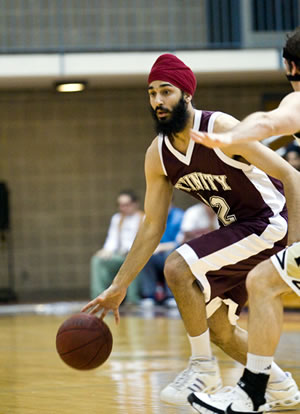
Can a kesdari Sikh man excel at high levels of athletic competition in the U.S. and practice his faith? Just ask Darsh Singh, junior starter and co-captain of Trinity University’s basketball team:
This season, fans haven’t had to chant for Darsh – the team co-captain has appeared in every game, and every time he plays, he makes a statement. As a follower of the Sikh religion, Darsh speaks volumes by wearing a turban and allowing his beard to grow. In fact, it’s believed that he is the only turbaned Sikh to play in an NCAA basketball game.
Maybe you weren’t as impressed as I was by his exploits as a jock. Not to worry, beta is an active engineering student, making honors every year and working in a number of student organizations.
Guest blogged by Manpreet Kaur
Recently the Sikh American Legal Defense and Education Fund (SALDEF) announced that they will be honoring Gap, Inc. for taking “pride 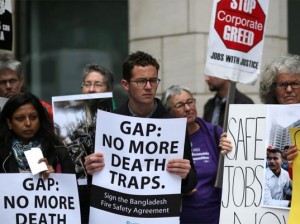 in featuring the Sikh American identity†at their annual gala on October 11th in Washington, DC. As you may remember, last year, the Gap used Sikh actor and designer Waris Ahluwalia in their “Make Love†campaign. The Sikh community gave a lot of praise to Gap over social media posting and re-posting the advertisement as even encouraging Sikhs to purchase from and support the company. This support increased exponentially when Gap responded positively to racist vandalism on an ad in New York City.
in featuring the Sikh American identity†at their annual gala on October 11th in Washington, DC. As you may remember, last year, the Gap used Sikh actor and designer Waris Ahluwalia in their “Make Love†campaign. The Sikh community gave a lot of praise to Gap over social media posting and re-posting the advertisement as even encouraging Sikhs to purchase from and support the company. This support increased exponentially when Gap responded positively to racist vandalism on an ad in New York City.
While having a Sikh model on a mainstream advertisement might be a positive step especially a year after the Oak Creek tragedy, as Sikhs, how can we, as a community, support a company that has carried out horrific labor practices? Gap’s terrible labor practices in South Asian countries have been widely documented, putting employees in extremely dangerous working conditions with less than minimum compensation.
Gap, Inc. literally has blood on its hands, as 29 trapped garment workers died in a fire in a Bangladesh factory that produced clothing for the company in 2010. United Students Against Sweatshops states:
Human rights activists and labor groups have been calling on Gap to fix the factories in the rest of their Bangladesh supply chain since December 2010, but instead Gap is sticking with its own corporate-controlled voluntary initiative that lacks transparency, accountability, and worker voice. Gap initially promised to sign onto a meaningful fire and building safety agreement, but then backed out, announcing their own, go-it-alone initiative. Gap is using the same self-regulatory approach that they and other brands have used for two decades and that has failed to protect the safety of workers in Bangladesh: factory monitoring controlled entirely by Gap, with no transparency, no role for workers or their trade unions, no commitment to pay prices to suppliers that make it feasible for them operate responsibly, and no binding commitments of any kind.
You will be walking in memory of twenty-eight-year-old Darshan Singh who was a young farmer from Amritsar district. On 9 September 1990, Darshan and two other young men went for a motorcycle ride when a group of police officers suspected them of being militants and shot at them. Darshan, the pillion rider, was hit by a bullet and fell down dead. The police took Darshan’s two companions into custody and reported them dead in alleged encounters.
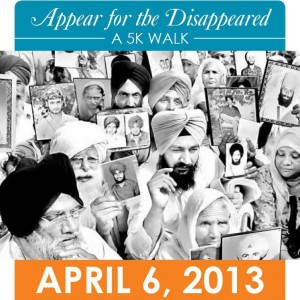 After recently registering for Ensaaf’s Appear for the Disappeared 5K walk, I received the above email with information about the individual in whose memory I would be participating.
After recently registering for Ensaaf’s Appear for the Disappeared 5K walk, I received the above email with information about the individual in whose memory I would be participating.Ensaaf has documented thousands of cases of disappearance and unlawful killings in Punjab and in an effort to allow its supporters to connect with victims, Ensaaf is holding a 5k walk, called Appear for the Disappeared, on April 6, 2013 in Fremont, CA. The walk is an opportunity for all participants and virtual donors to commemorate a specific individual who was disappeared in Punjab by Indian security forces from the mid-1980s to late 1990s. Ensaaf’s goal is to commemorate 500 individuals and raise $25,000 to complete documentation efforts.
Between 1984 and 1995, Punjab witnessed thousands of disappearances and unlawful killings, with many victims facing unimaginable torture at the hands of Indian security officials. Rarely were victim families informed of the fate of their loved ones, let alone given a chance to carry out final rites and funeral services. As thousands of men and women disappeared and their families left in the darkness, responsible security officials were awarded promotions and their human rights violations faded into darkness.
 The history of the Sikhs in the United States is known well in specific circles. Bhagat Singh Thind’s famous failed case for legal recognition by the US Supreme Court, iconic images of Stockton Gurdwara, traces of the Punjabi-Mexican experience, memories of the Ghadari Babas are generally remembered in this context. However, this is merely the tip of the iceberg.
The history of the Sikhs in the United States is known well in specific circles. Bhagat Singh Thind’s famous failed case for legal recognition by the US Supreme Court, iconic images of Stockton Gurdwara, traces of the Punjabi-Mexican experience, memories of the Ghadari Babas are generally remembered in this context. However, this is merely the tip of the iceberg.
A fascinating tale that is rarely discussed is that of Pahkar Singh. In our new post 9/11 fad to ad nauseam repeat that we are a “peaceful religion,” we tend to dismiss those heroic Sikhs that also faced racial discrimination in their own way. In the case of Pahkar Singh, the young Punjabi Sikh farmer living in the Imperial Valley (East of San Diego) in 1925. After being robbed of his crops and cheated by whites that took advantages of the racist laws in the land, Pahkar Singh picked up his gun and gandasa and killed two of them. He only stopped from killing a third, when the man’s 8 month pregnant wife, literally stood in the face of the barrel to protect her husband. At that point, Pahkar Singh turned himself in. At his defense, along with other Punjabi farmers, many even white small farmers came to sympathize with Pahkar Singh. He spent 15 years in San Quentin before he was released. It is these lesser known instances of the Sikh-American experience that I find so much more interesting.
In this vein, a number of Sikh organizations led by Stockton Gurdwara and the Sikh Information Centre have come together to host a series of events in celebration of the Sikh-American Centennial. Beginning on SEPTEMBER 22, , there are a series of events to commemorate, remember, and reflect on the Sikh-American focus. YOU DO NOT WANT TO MISS IT! With the recent events at Oak Creek Gurdwara, this may be a more prescient time than ever.
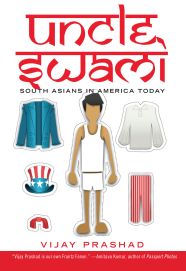 It has been nearly four years since we last attempted this. Back then, we attempted TLH’s very first book club, by examining Gurharpal Singh’s and Darshan Singh Tatla’s Sikhs in Britain: The Making of a Community. This round we are suggesting Vijay Prasad’s Uncle Swami.
It has been nearly four years since we last attempted this. Back then, we attempted TLH’s very first book club, by examining Gurharpal Singh’s and Darshan Singh Tatla’s Sikhs in Britain: The Making of a Community. This round we are suggesting Vijay Prasad’s Uncle Swami.
Although the book is aimed at issues centered around South Asian American experiences, it may be useful and enlightening to see how well they fit, shape, and interest Sikh-American experiences.
The Book:
From the jacket:
Within hours of the attacks on the World Trade Center, misdirected assaults on Sikhs and other South Asians flared in communities across the nation, serving as harbingers of a more suspicious, less discerning, and increasingly fearful worldview that would drastically change ideas of belonging and acceptance in America.
Weaving together distinct strands of recent South Asian immigration to the United States, Uncle Swami creates a richly textured discussion of a diverse and dynamic people whose identities are all too often lumped together, glossed over, or simply misunderstood. Continuing the conversation sparked by his celebrated work The Karma of Brown Folk, Prashad confronts the experience of migration across an expanse of generations and class divisions, from the birth of political activism among second-generation immigrants and the meteoric rise of South Asian American politicians in Republican circles to migrant workers, who are at the mercy of the vicissitudes of the American free market.
A powerful new indictment of cultural and racial politics in America at the dawn of the twenty-first century, Uncle Swami restores a diasporic community to its full-fledged complexity, beyond both model minorities and the specters of terrorism.
The Author:
For those interested in issues related to South Asian Americans, Professor Vijay Prasad needs little introduction. The author of The Karma of Brown Folks has been one of the foremost thinkers and scholars on the subject of identity politics and identity formation of South Asians in the Unitd States.
There has been plenty of criticism of his politics, book, and writings. All of these are pertinent and can allow for a more nuanced discussion. Still his voice is important and calls out for discussion.
The Format:
- Part 1 (Monday, 7/16) – Chapter 1 (Letter to Uncle Swami) and Chapter 2 (The Day Our Probation Ended)
- Part 2 (Monday, 7/23) – Chapter 3 (The India Lobby) and Chapter 4 (How Hindus Became Jews)
- Part 3 (Monday, 7/30) – Chapter 5 (Compulsions of Ethnicity) and Chapter 6 (The Honeycomb Comes Apart)
What to do from here:
- Order the book ASAP. Don’t delay as we are going to begin in one week.
- Invite others and help us spread the word!
- If you are going to participate, leave a short introduction here in the comment section and let us know that you plan to take part.
- Be ready in 1 week!
It’s that time of year again!
For those Southern California natives, you (hopefully) know it rolls around once every year. This year, SikhLens is proud to announce its annual Sikh Arts and Film Festival to be held November 18th – 20th, 2011 at the prestigious Dodge College of Film and Media Arts at Chapman University in Orange, California. As avid supporters of Sikh Arts, and creativity in general, I am hoping our readers would be especially interested in this event coming up in the next couple of weeks.
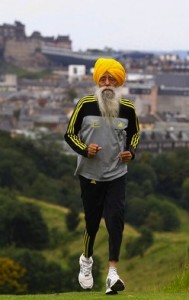
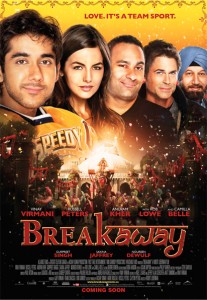 The Sikh Arts and Film Festival serves as a central venue for artists to showcase and share Sikh heritage and culturethrough the mediums of film, literature, art, music, social media and fashion. As an often-misidentified minority, this type of forum has proven to be essential for Sikhs to transcend cultural boundaries, generate awareness, and connect with the broader community.
The Sikh Arts and Film Festival serves as a central venue for artists to showcase and share Sikh heritage and culturethrough the mediums of film, literature, art, music, social media and fashion. As an often-misidentified minority, this type of forum has proven to be essential for Sikhs to transcend cultural boundaries, generate awareness, and connect with the broader community.
For tickets, scheduling and more information, visit www.sikhlens.com.
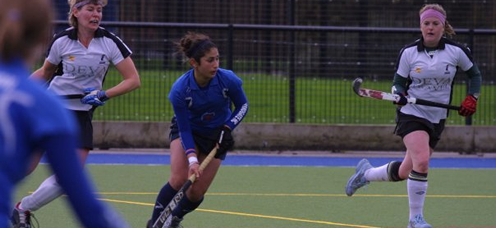
Ashpal Kaur Bhogal
TLH has covered several promising athletes in the Sikh community. Basketball player Darsh Singh, Football player Nuvraj Bassi, and Boxer Andrew Singh Kooner. The list of Sikh athletes is fortunately growing, including Fauja Singh, Pardeep Nagra, and Subaig Singh – some of whom we have covered and others we haven’t had a chance to. Jodha recently updated us on the Bhullar Brothers, potential NBA-ers, Sim Bhullar and younger brother Tanveer Bhullar, both 7-foot-somethings.
The thing about this list, however, is that all of these athletes are men.
It begs the question, then, where is the representation of Kaurs in sports today? After watching news coverage of the growing number of women playing kabaddi in Punjab, and with the popularity of the Women’s World Cup finals this past weekend, it made me think about the importance of sports in the lives of young Sikh girls. Much has been written about why sports are critical for young girls.
A large body of research shows that sports are associated with all sorts of benefits, like lower teenage pregnancy rates, better grades and higher self-esteem… separate studies from two economists offer some answers, providing the strongest evidence yet that team sports can result in lifelong improvements to educational, work and health prospects… Using a complex analysis, Dr. Stevenson showed that increasing girls’ sports participation had a direct effect on women’s education and employment. [link]
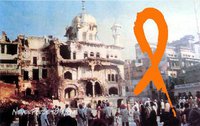
6/4 @ 2:15pm – More tweets by Panjabi MC, award-winning MC Amrit Tung, even hiphop artist B-Magic. Also pagh salute to our friends at Naujawani for keeping us up to date with their twitter feeds.
6/3 @ 4:45am – Since the post went up, Bhangra Star Jassi Sidhu, famed DJ Bobby Friction, Gurdarshan Mangat (Saintlion), and Raxstar. Keep the list growing!
So as they say, it starts with an idea. This one comes from Simrat Kaur from the Bay Area. Sometimes, it happens even on the BART.
It was an idea to increase awareness all over the world of the events that unfolded during Operation Blue Star in 1984. If people from the Middle East can use sites such as Twitter to start revolutions, then why not Sikhs? We need to stop using social networking sites for the purposes of hitting on girls and flirting with guys. We need to start a revolution. How long will Sikhs stay quiet? I am one hundred percent sure that if the same attack had been carried out on the holiest of places of any other religion, things would have definitely not ended this way.[link]
The challenge is simple and symbolic. We have not forgotten. Without justice, there can be no forgetting. So here is what we are asking. Use your twitter or start an account – but tweet the following #neverforget84 everyday and all day from Jun 3rd to the 6th. Here is the event page on Facebook. The goal is to get #neverforget84 to trend. Is it slacktivism, maybe….but can it have real ramifications, maybe…..
The Jakara Movement is participating so you can follow them too at @jakaramovement . At the time of this posting, even bhangra sensation Jassi Sidhu has tweeted #neverforget84 . With some encouragement, maybe even Jay Sean, Gurbaksh Chahal, and others will follow. Do your part! Tweet! and ask for favors from friends/family/people you are following!
Also for some general information about Sikhs and 1984 – follow this link.
Hope to see your tweet!
Conversations about hair are often emotional for Sikhs – and therefore they are conversations which we tend to avoid. For many Sikhs, it is a constant struggle to explain the historical significance of keeping our hair and/or wearing a turban while other Sikhs will argue that simply keeping your hair or wearing a turban by no means makes you a good Sikh. While that may be true, being able to have conversations about hair is an incredibly important and necessary dialogue for us to participate in. Many Sikhs in the diaspora have struggled to maintain their identity, while Sikhs in Panjab are struggling to be western. It’s such an interesting juxtaposition and anybody who has visited Panjab recently will see the dwindling number of Sikh boys choosing to wear turbans. In an effort to explore this issue, a fascinating documentary film – Roots of Love – by award winning filmmaker Harjant Gill is being released this Spring.
Told through the stories of six different men ranging in age from fourteen to eighty-six, Roots of Love documents the changing significance of hair and the turban among Sikhs in India. We see younger Sikh men abandoning their hair and turban to follow the current fashion trends, while the older generation struggles to retain the visible symbols of their religious identity. The choice of cutting one’s hair is one that not only concerns the individual and his family, but an entire community. [link]
I was given the opportunity to watch the entire documentary – I highly recommend the film and was drawn to its excellent cinematography. You can watch the trailer below and after the jump, read my interview with Director, Harjant Gill. Then, think about how hair plays a significant role in your life, if at all?

Guest blog by: Satinderpal Kaur
This August the 12th annual Camp Gian, in which approximately 150 youth ages 3 to 20 partook, was held. In its twelfth year, Camp Gian had a new home, the Khalsa Care Foundation, but still had the same mission. Youth attended the overnight camp from August 8th through August 13th and spent five days being instilled with “gian”—knowledge—in various forms. While learning about the history of the period from 1740 to 1850, the youth also learned about discipline, spiritual growth, being part of a “sangat” (congregation/ community), and leadership through various activities throughout the week.
Every morning, campers would be woken up as early as 4:00 a.m. in order to get the day started on time. All of the campers would join each other in the main hall for yoga exercises in order to get their bodies ready for the day. The exercises were followed by recitation of the morning prayers, Jap Ji Sahib, Jaap Sahib, and Savaiye, as well as singing of kirtan. During the morning, as well as the evening, divaans all of the activities are facilitated by campers so that they learn how to perform the services that occur at gurdwara. The campers are responsible for making the prashaad, doing ardaas, taking hukam, and handing out prashaad. The theme shabad for this year was “Darshan Har Dekhan Kai Taaee” and the theme song was entitled “I Can’t Wait to See You.” Every year a shabad is chosen to go hand in hand with the history lessons and a theme, or take-home message, is developed. Waking up in the morning and participating in the morning divaan instilled values of self-discipline and personal, spiritual growth in the campers.
Sikhs will be celebrating Vaisakhi world wide next week on April 14th. Sikhs in Malayasia are requesting that Vaisakhi be made a national holiday.
Tan Sri Darshan Singh, the President of Malaysia National Sikhs Movement president, said, “The Sikhs who arrived earlier in this country served in the security forces and have contributed towards the economic development of Malaysia”. Karpal Singh of DAP believes that Vaisakhi should be given consideration as a national holiday because of its considerable significance to Sikhs. However, Malaysian Sikhs have not gotten a positive response from the government.
A common saying is a community knows when its contributions are being viewed as an important part of a “host” country’s fabric of life when the entire nation gets a day off on a day that is significant to that community. In a nutshell, it means you have really “made it”.
I look forward to the day that non-Sikhs will be taking Vaisakhi off in Malaysia and America. We have “made it” in these countries in many ways although we are often treated like “resident aliens”. I wish it wouldn’t take a national holiday to break that mold, but may be it would help?
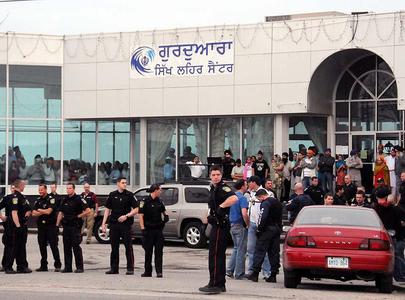 As many Sikhs throughout the world are gearing up to celebrate Vaisakhi, we continuously get disheartening news as well. In Toronto there was a shameful incident this weekend.
As many Sikhs throughout the world are gearing up to celebrate Vaisakhi, we continuously get disheartening news as well. In Toronto there was a shameful incident this weekend.
A former judge, now a prominent Brampton lawyer, is in hospital with serious stab wounds when a mob turned deadly at a Sikh temple on Friday evening.Manjit Mangat, 53, is in hospital with multiple stab wounds to his abdomen, thighs and legs and cuts on his face after he was attacked inside the Sikh Lehar Centre, a temple at Bramsteele Rd. near Steeles Ave. and Hwy. 410.[link]
The worst exhibit I saw ..and I know BOTH sides are guilty of this, was the declaration that the other side are not Sikhs. Both sides need to mature and grow up. I hope the Sikh youth can provide a better example for our elders.[link]
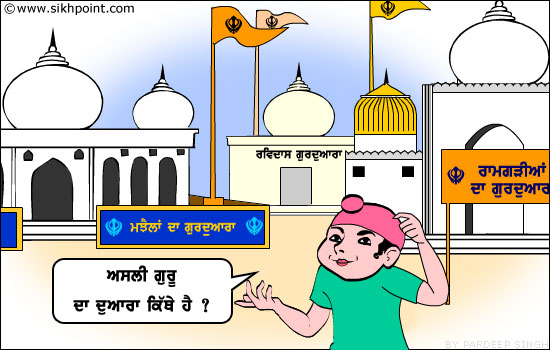 There has been much in the news in Sikhdom with repercussions for years to come. The news of Professor Darshan Singh Ragi, former head of the Akal Takht, and even the Nanakshahi deserve time and commentary. I will leave those for another day.
There has been much in the news in Sikhdom with repercussions for years to come. The news of Professor Darshan Singh Ragi, former head of the Akal Takht, and even the Nanakshahi deserve time and commentary. I will leave those for another day.
In some ways with even greater repercussions has been the announcement by members of Dera Sach Khand Ballan of the removal of the Guru Granth Sahib from their places of worship. It is key to point out that NOT all people that identify themselves as Ravidasia are part of Dera Sach Khand Ballan and many vehemently oppose some of their policies and tenants. Still their following is significant and important. Talk of the removal of the Guru Granth Sahib had been in the works since the unfortunate events in Vienna last year. Even at that time, I had asked the question, “How large is the tent that is the Sikh Qaum”?
I commended the Singh Sabha for their achievements in their time and place:
Despite the various attacks on the Singh Sabha movement for only promoting Khalsa hegemony and other spurious slanders by neo-Sanatans, post-colonialists attempting to form neo-Brahman ‘intelligentsias’, those that believe they ‘own’ the Sikh identity, some Hindu chauvinist groups, and various beatniks, the movement was in fact very broad-minded and fought to enlarge the tent that is the Sikh Qaum.
They understood the difference between public and private aspects. In private, people may have their own practices, beliefs, etc. and while the Singh Sabha sought to bring these more in line with the practices and principles of Gurbani, they did allow some diversity in private. In public, we come together and stand by the Panthic rehat maryada.[link]
The Dera Sach Khand Ballan has now made the political move to ‘declare’ a new religion and call for the removal of the Guru Granth Sahib. It is important to NOTE that the move is being pushed by a section of the Ravidassia community and has found much opposition as well.
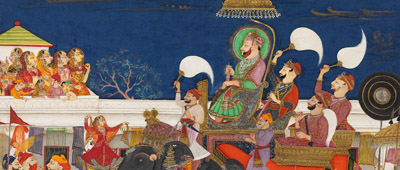 Guest Blogged by: Harinder Singh
Guest Blogged by: Harinder Singh
Last week I walked into the first exhibition to “comprehensively” explore the extraordinarily rich culture of the maharajas. “Maharaja – the splendor of India’s Royal Courts” is the feature exhibit at the Victoria & Alberta Museum in London and will be available through mid-January 2010. It was Susan Stronge, senior curator at V&A and friend of the Sikhs, who literally showed me the way to the V&A after a candid conversation over cafe latte about Sikhs, art, Orientalism, Barak Hussein Obama and Patwant Singh (late transnational Sikh ambassador). Her interest in my take on the Indian Maharaja’s depiction became the unusual catalyst to see the exhibition through two lenses: that of a Sikh and a South Asian.
Given that the number five in the Hindu numerology spans around business, marriage and romance, the five zones of exhibitions made sense. How the British have harbored such romantic notions of arbitrary boundaries of marriage and power in what it termed India! My journey through the exhibition started with the “Royal Spectacle” followed by the “Kingship in India.” It solidified with the “Shifting Power” that legitimized “The Raj’ which divided its subjects into “Princely India.” The only thing missing were the people, today’s South Asians.
Guest blogged by: Amol Singh
Harinder Singh Jinda and Sukhdev Singh Sukha were hanged to death in Pune Jail for the assassination of General Arun Vaidya, the architect of Operation Blue Star. In the wake of their impending hangings, Sukha and Jinda sent an open letter to the President of India in which they documented their justifications for Sikh militancy and demonstrated how their actions were placed inside a global sphere of justice and necessity.
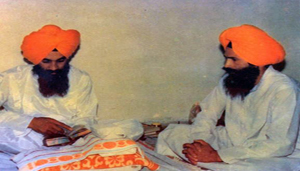 Sukha & Jinda’s letter contextualized Sikh militancy inside of a broader sphere of global defiance against outdated and arbitrary power structures.
Sukha & Jinda’s letter contextualized Sikh militancy inside of a broader sphere of global defiance against outdated and arbitrary power structures.
When nations wake up, even history begins to shiver. During such momentous moments a Banda Bahadur bids farewell to his peace-dwelling and destroys a State of oppression like Sirhind, a Che Guevera turns down a ministership of Cuba, loads a gun on his breast and entrenches against the enemies in the forest of Bolivia, a Nelson Mendela rejects the ideology of apartheid and prefers to spend his life in a dark prison cell.
We’ve all sat through it before…or…stood through it, that is.
As Anand Sahib ends, we stand for Ardaas and collectively reflect on the lives and accomplishments of the Gurus and the 18th century martyrs who gave their lives to preserve our Sikh way of life. Somewhere in between this reflection, and wishing for “Sarbat da Bhala“, we take a bizarre detour in to the “ins and outs” of our community.” Yes…I am referring to the lengthy list of births, birthdays, graduations, anniversaries and other milestones we find in the middle of our Ardaas.
I’m not sure when this practice started; where a member of the sangat would make an offering to the Gurdwara so an “Ardaas” can be done on their behalf. Birthdays are most common week to week, but I have heard more creative ones – celebrating a new job, new car, first mother’s day, wishing someone well on an upcoming exam, or safe travels for someone’s trip to India. Some even taken advantage of this process, by doing an “Ardaas” on behalf of their business week after week – essentially advertising their local store, while they have the entire community’s ear. I’ve raised this issue to the committee that perhaps there needs to be a better way to handle these “community announcements” rather than during Ardaas…I mean, seconds after we recount the martyrs who were cut limb by limb and scalped, we collectively thank Waheguru for Tinku’s new Benz? It just doesn’t seem right.
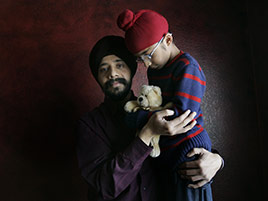 A couple of days ago Darshan Singh took his six-year-old son, Gurjot, to the post office to get a U.S. passport. Unfortunately, his experience is all too familiar: postal workers refused to take Gurjot’s photo, insisting he remove his “hat”:
A couple of days ago Darshan Singh took his six-year-old son, Gurjot, to the post office to get a U.S. passport. Unfortunately, his experience is all too familiar: postal workers refused to take Gurjot’s photo, insisting he remove his “hat”:
A Frisco father says his family’s trip to the post office turned into an emotional experience after a postal worker refused to take his son’s passport picture while the boy was wearing a turban…
“We kept telling them, ‘it’s not a hat,’” Singh said. “I want to make sure that doesn’t happen to any other kid of my religion.”
UPDATE: Both authors – Dr. Tatla and Dr. Gurharpal Singh – said that they will participate in some capacity in our first book club. A number of well-known bloggers from some prominent websites have expressed interest as well. ORDER YOUR BOOK NOW! Only 1 week before we begin!
————————————————————
Coblogged: Jodha and Mewa Singh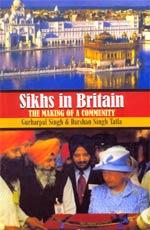
What we are about to suggest, to our knowledge has never been done before.
We are initiating the first TLH web-wide Sikh Book Club. At this point we are not sure of the frequency as we will gauge the interest from this first attempt.
What are we suggesting?
For the first book of our book club, we are suggesting a simultaneous reading of Gurharpal Singh and Darshan Singh Tatla’s Sikhs in Britain: The Making of a Community.
The two of us – Jodha and Mewa Singh – will facilitate the discussion (unless we can find someone better!). We plan to invite the authors as well as some prominent Sikh activists in our community. We hope Sikhs from all across the globe (especially UK Sikhs) will participate. Please feel free to invite others as well!
The Book:
Over the years we have read numerous academic books on the Sikhs and their history and the works of Gurharpal Singh and Darshan Singh Tatla have always been amongst our favorites. Thus, it was with great excitement that we see these two professors collaborating together. Both have an intimate knowledge of the Sikh community in England and we can think of few others that would be more able to write such a tome. This book, although focused on our brethren and sistren(?) in the UK, will provide us an avenue to delve into that section of our community, but we hope to broaden the conversation to understand other sections of our Sikh diaspora.
For the uninitiated Panthic Weekly is a Sikh portal that provides news and media on various issues that affect the Sikh community. As part of the Panthic Network, my first memories of the team are related to the long-standing Fort Panth Khalsa that especially became popular during the debates centered around the then-Jathedar Ranjit Singh.
The website over the years has developed a formidable presence on the website and is a celebrated by that section of our community that have a leaning towards the strong opinionated slant it represents, especially towards a specific Jathabandi.
For the most part, I applaud Panthic Weekly’s efforts and their abilities to engage with youth audiences with a variety of media. Their Khalsa.tv, Panthic.fm, Kathaa.net and Keertan.net are all efforts that deserve praise.
However, my problem with the network is their derogatory language and uncivil discussions that are promoted, often bordering on bullyism. Whenever, the editors of Panthic Weekly do not like a person, they change their name from ‘Singh’ to ‘Sinh’. Parkash Singh Badal becomes Parkash Sinh Badal; Former Jathedar Darshan Singh Ragi becomes Darshan Sinh Ragi; Prime Minister Manmohan Singh becomes Manmohan Sinh. Allegations of RAW agent, RSS-stooge, “traitor”, etc. and the worst parts of our post-1984 history are relived where Sikhs spew vitriole on other Sikhs.
SCORE has already come under scrutiny here in The Langar Hall, and I don’t wish to scrutinize the entire organization further. But their list of honorees from the 2008 Heritage Dinner does deserve some attention. This year, the following individuals were honored:
1. Sandeep Singh Caberwal, a Sikh entrepreneur in Silicon Valley and a model, wears a turban, has a beard and was chosen by designer Kenneth Cole in its recent fashion campaign
2. Ms. Tami Yeager and Preetmohan Singh for their film documentary “A Dream in Doubt,” which explores the real life story of Rana Singh Sodhi’s family, whose brother was murdered as the first hate crime victim in AZ in the 9/11 aftermath
3. Darshpreet Singh, a recent graduate of Trinity University in San Antonio, Texas. was co-captain of the Men’s Basketball team and fan favorite, and believed to be the only turbaned Sikh to play in a National college basketball game
4. Dr. Jagjit Singh Khalsa is the Chief of Medical Consequences of Drug Abuse at the US National Institutes of Health
5. Gurvendra Singh Suri, founder & CEO Optimal Solutions Integration, Inc., a successful technology consulting Company in Dallas, TX
6. Raghbir Singh Subhanpur, business owner from New York and President of New York Shiromani Akali Dal was honored with Community Service award
7. Surinder Singh Chawla, Nassau County Human Rights Commissioner, was honored for Social Activism and Service
8. Ro Khanna, an Indian American political activist from California was also honored for his role in supporting Sikh issues. [link]
Readers, what strikes you as odd about this list? . . . The only woman recognized is American. How is it possible that no Sikh women made any noteworthy contributions to the Sikh or American community in the past year? (There seems to be an attempt to recognize contributions to both Sikh and American, non-Sikh communities.) Let me tell you- it’s not.
